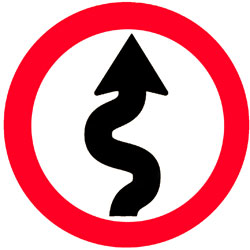Peyronie's Disease Or Congenital Curvature?
How do you know if you got Peyronie's disease or congenital curvature? There are ways to tell the difference and this article explains how. However, in order to be absolutely sure you should see your doctor for formal diagnoses.
What Is Congenital Curvature?
Congenital curvature differs from Peyronie's disease as you are born with the condition, i.e. your erected penis has always been bent.
Naturally occurring curvature is actually more common than most men realize. Usually the penis is bent downwards and is noticeable as soon as young men become sexually active.
How To Tell If You Got
Peyronie's Disease Or Congenital Curvature?
How do you know you have Peyronie's disease (acquired curvature) and not congenital curvature?

It sounds relatively straightforward, one you are born with (congenital curvature), while the other one is acquired as the result of a penis injury (Peyronie's disease). However, life is never so straightforward.
If you have always had bent penis, then you most likely have congenital curvature. However, if you had some kind of penis injury before becoming fully sexually mature, then there is a possibility that you have Peyronie's disease. You should then be able to feel the scar (plaque) in the penis during examination.
Furthermore, if you have naturally occurring curvature and your penis starts to get more bent / deformed, then you are likely to have developed Peyronie's disease as well.
This is why you should always see your doctor and get formal diagnose, to clarify if you have Peyronie's disease or congenital curvature.
Does Traction Device Work For Congenital Curvature?
Penis traction device have been successfully used to treat men with Peyronie's curvature. It is therefore only logical to ask if they can also benefit men with naturally occurring curvature.
I have not been able to find any studies about using traction to correct congenital curvature. There is of course different reasons for the penis bend. There is no scare (plaque) involved if you have congenital curvature.
I took the opportunity to ask Dr. Joel Gelman about this when he agreed to be interviewed for My Peyronie's. Dr. Gelman not only treats men with Peyronie's disease, he also treats men with congenital curvature.
I asked him if based on his experience is there is anything other than surgery worth trying for men with congenital curvature? Dr. Gelman answer was:
"No. I think traction is totally impractical and ineffective and Xiaflex is not indicated for congenital curvature. That is because congenital curvature is a completely different problem. The tissue is normal. The problem is that between conception and birth, one side grew too long compared to the other side. Xiaflex is supposed to break down and release scar tissue, but there is no plaque or scar tissue with congenital curvature. Plication is the only treatment I consider appropriate. The surgery is highly effective if done properly. Moreover, while plication shortens the long side, in these cases, the penis is generally above average in length from the start".
I also asked Dr. Levine, one of the best known Peyronie's specialists in the world today. He is properly the doctor with the most experience of using traction devices for men with Peyronie's disease and I do respect his experience and opinion greatly. This is what he had to say about using traction device to treat congenital curvature:
"I have tried traction in men with congenital curvature with no benefit noted. If they have a component of scarring which can occur with time in men with congenital curve they may see benefit with traction but so fat if it is pare chordee without scarring traction does not appear to work".
Finally I asked Dr. Ludlow the same questions and he basically agreed with the others:
"Congenital vs acquired curvature is an important and frequently overlooked issue. Most congenital curvature is, in my mind, a surgical problem because the curvature is usually due to an asymmetric development of the tunica albuginea. There are certainly specific cases where the curvature is related to an abnormal development of the urethral plate but there is usually an associated hypospadias. The bottom line is that this is a surgical disease and I don’t think that traction therapy will lead to a successful outcome. I am not aware of any studies that support the use of traction devices in the treatment of congenital penile curvature".
So unfortunetly men with congenital curvature either have to learn to live with it or see a doctor about corrective penile surgery.



